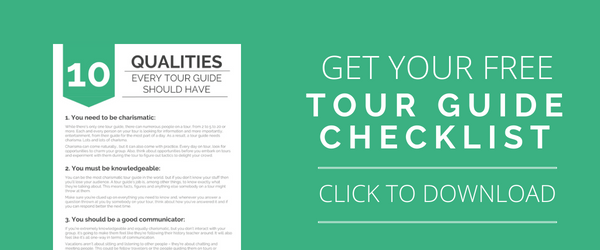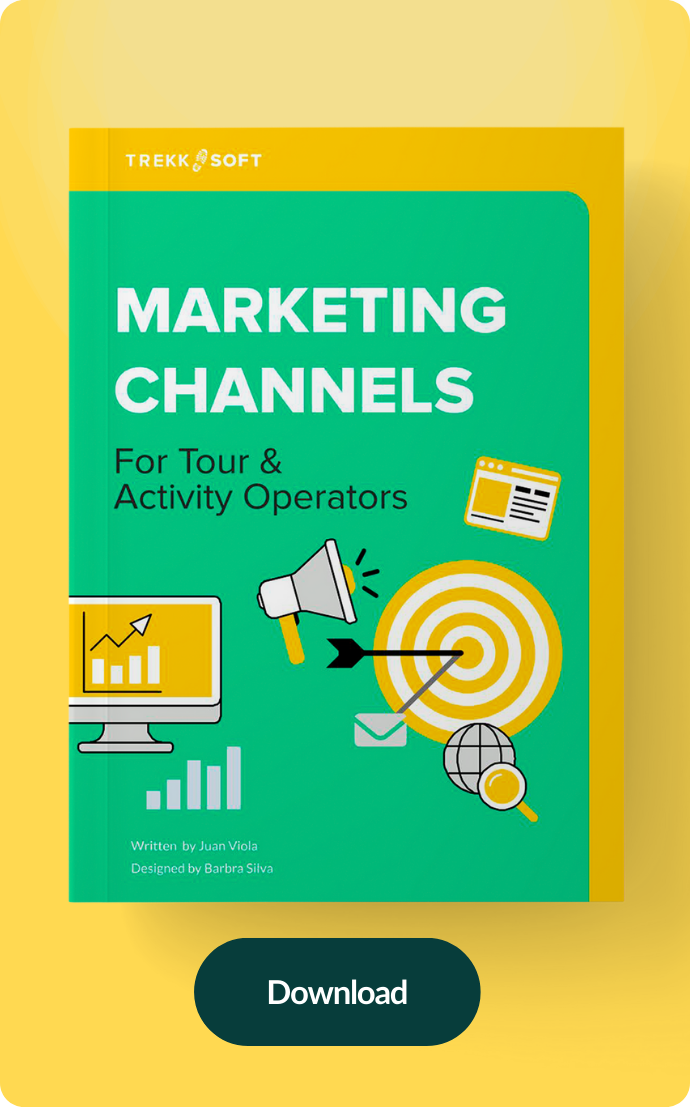To get a better idea of how your business is doing in an increasingly competitive landscape, conducting a little bit of research can help you get a fairly good overview of your performance. A quick and dirty way of doing this is through surveys, which can be easily put together.
Here's our simple guide on how to create a post-trip survey.
Conducting a survey is a form of market research, which can help you determine how your business is doing in terms of the 7Ps of marketing.
Product - Is your product satisfying your customers like how you hoped it would? How can your product be improved? What do your customers really think you need to work on?
Price - Are you delivering enough value based on the price you're charging? How else can you add value to your customers without tipping the accounts?
Promotion - Are your promotional efforts reaching the markets you want to reach? Are most of your customers families, young professionals, teenagers, retirees?
Placement - Placement focuses on your distribution channels, whether it's your own website, OTA, travel agents, DMOs or anything else you can think of.
People - Your guides are your customer representatives. Are they doing a good job? What about the person who manages your bookings? Are they polite? How can they improve the experience for your customers?
Process - This refers to the processes you practice in your business, may it be your booking process, the process of arranging the logistics of your tours and so on. Is there a way to do it better, faster and cheaper?
Physical evidence - Although tour and activity operators ultimately deliver a service, what physical evidence can you provide your customers to signal value and professionalism? Do you have an impressive website that's easy to use? Do you provide clean and good-quality equipment?

According to Canada Business Network, market research can also help you:
- Understand your customers and their preferences to help you create more effective marketing campaigns.
- Recognise changes in travel trends and how it affects the demand of your tourism products.
- Identify new opportunities for growth through offering new products and services to meet new demands.
- Find new markets to expand into.
- Recognize and plan for industry and economic shifts, and make changes to your inventory, price and staff levels as needed.
- Monitor the competition in your market.
- Learn how customers compare you to your competitors.
- Mitigate risk in your business decisions by using information, not just intuition, to drive your business decisions.
A simple survey can be sent out to customers after a tour or activity with you. It can provide you with invaluable feedback that you can use to build your business and deliver a better experience.
Okay, great. But how do you create a post-trip survey?
1. Determine your objectives
What would you like to find out? What is your goal for this survey? Come up with one main objective and then break it down into clear and concise questions about your business that you would like to have answered. Here's an example:
Main objective: I want to improve my tours.
Question 1: Where do I start?
Question 2: Which changes are likely to yield the most results?
Question 3: How can I implement these changes?
2. Draft out your questions
Use your objective and supporting questions as a guideline to draft out questions for your survey. Remember to also get the basic details down, for instance:
- Name
- Age
- Nationality
- Which tour did you join?
Going back to the example above, we can also come up with the following question
- Who was your guide?
- How satisfied are you with the tour experience? (Here, you can include a scale so that customers can rate your tour.)
- What was your favourite part of the tour?
- Was there anything about the tour that you didn't like? Please feel free to go into as much detail as possible.
- How can we improve our tours?
- Do you have any other comments you would like to add?
To get the most out of your results, think of some potential answers and use follow-up questions to explore these ideas. For example, if you're wondering whether or not to find a new restaurant to have lunch at, you can include a questions like "What did you think of the restaurant we stopped at? Do you have any comments about the price, quality of food and service?"
Learn more about the type of questions you can ask here.

3. Identify the right tools
Survey tools
I find a simple Google Form to be suffice, and a link to the form can be sent together with your post-trip email. You can also look at other tools like Survey Monkey (which has pretty decent features for it's free accounts) or Free Online Survey (which isn't actually free).
Email tool
Like I mentioned earlier on, the easiest way to conduct a post-trip survey is by sending it to your customers along with a post-trip email. You can use TrekkSoft to schedule post-trip emails to your customers without the hassle of importing your contact list from one platform to another. However, if you have a large mailing list, consider using email service providers like MailChimp or GetResponse.
Head over to this article for our 5 top email service providers.
Additional tools to add value to your survey respondents
Also, remember that they are doing you a favour by completing the survey so think about what you can offer to add value to your respondents. Perhaps offer a voucher code upon completing the survey? Or your eternal gratefulness?
Your post-trip email could look something like this:
"Hey there,
Thanks for joining XYZ tour a few days ago. I had a great time showing your around and introducing you to our local culture and tradition. I really hope you had a great time.
If you had a good time, do you mind completing a short survey for me? At XYZ Tour Company, we are constantly striving to deliver a better experience for our customers and we would really appreciate your feedback on our tours. Once completed, we'll send you a voucher code that you could use the next time you visit us.
Here's the link to our survey: [insert link]
Thank you so much, we owe you big time.
Best,
Nicole Kow."
4. Send it out
Once you've drafted your survey, make sure that questions clear and easily understood. If you're unsure about the way you've worded something, have someone else read through your survey.
Here's a simple checklist to review your survey:
- The questions in the survey are easy to follow and understand
- The survey requested for basic information such as name, age and contact details
- The survey takes no more than 10 minutes to complete
- The survey covers both quantitative and qualitative information
- If you ask for a rating, do you need to ask why?
- The questions in the survey link to the main objective and what you really want to find out about your business
- A "Thank You" page that appears at the end of the survey

5. Analyse your results
Quantitative results
This would be the average of your ratings on a specific item. If you're consistently getting high scores for a walking tour but not your paid tours, ask why. What can you do better? What can you consistently replicate to provide the same quality of service? If something yield terrible ratings, again, ask why. What can you do better? What can you get rid of to enrich the experience for your customers? What should you add?
Qualitative results
This is going to take time. Scan all the answers from your survey and begin to group them into overarching themes. Under each theme, create more precise categories. Then, create sub-categories for each one (I called them "Items") and highlight actionable or useful points you can take into consideration. It should look something like this:
- Theme 1 - Guide's characteristics
- Category 1 - Presentation
- Item 1 - Needs to talk louder
- Item 2 - Does not seem like he's knowledgeable
- Category 2 - Not punctual
- Category 3 - Poor group management
- Item 3 - Spent a lot of time waiting for group members to return to the meeting point
- Item 4 - Meeting point was hard to find
- Item 5 - The tour group was unfriendly
- Theme 2 - Mode of transport
- Category 4 - Pick-up van was old and uncomfortable
- Category 5 - Air-conditioning was broken
Through out this analysis, look for high impact items to tackle, i.e. low cost and high return. It could be something as simple as changing the type of coffee you serve your guests.

Some disadvantages to consider:
1. Low completion rates
This usually happens when a survey is too long and people give up halfway. Make sure you survey takes no longer than 15 minutes. Make the deal a sweeter one by offering a voucher code as well.
2. Low number of responses
You need to make sure that you are capturing the opinions of a large group of people to make sure that your results reflect the market you're targeting, not just the opinions of one or two people.
3. Your results don't reflect your target market
If you have an idea of who your target market is, make sure your respondents reflect this market. So if you want opinions from long-term backpackers, make sure they are the ones responding to your survey as well.
Improve your tours with this simple tour guide checklist




